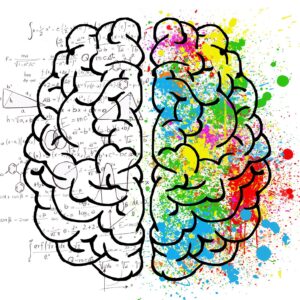Artificial Intelligence (AI) has become one of the most talked-about technologies in recent years. It is being hailed as a game-changer for businesses of all sizes, with the potential to improve efficiency, reduce costs, and increase profits. However, for small business owners with limited knowledge about AI, there are a number of common misconceptions that can lead to confusion and even fear. In this article, we will discuss the top 10 misconceptions about AI and explain why each one is incorrect.
What is Artificial Intelligence (AI)?
AI refers to the development of computer systems that can perform tasks that would normally require human intelligence, such as visual perception, speech recognition, decision-making, and language translation. These systems use algorithms and statistical models to learn from data and improve their performance over time. The applications of AI are wide-ranging, from autonomous vehicles and virtual assistants to fraud detection and medical diagnosis.
A brief history of AI development
The roots of AI can be traced back to the 1950s, when researchers began exploring the possibility of creating machines that could mimic human intelligence. Early efforts focused on rule-based systems, which used if-then statements to make decisions based on specific conditions. In the 1980s, machine learning emerged as a new approach to AI, which allowed computers to learn from data and improve their performance without being explicitly programmed.
In recent years, deep learning has become the dominant form of machine learning, which uses artificial neural networks to simulate the way the human brain processes information. This has led to significant advances in areas such as computer vision, natural language processing, and speech recognition.
The current state of AI technology
Today, AI is being used in a wide range of industries and applications, from chatbots and recommendation engines to autonomous drones and self-driving cars. The most advanced AI systems are capable of performing complex tasks with a high degree of accuracy, such as detecting cancer from medical images or translating languages in real-time.
However, there are still many challenges to be overcome in the development of AI, such as ensuring that these systems are transparent and unbiased, and that they can be trusted to make decisions that are ethical and responsible.
Top 10 misconceptions about AI
AI will replace human workers
One of the most common misconceptions about AI is that it will lead to widespread job losses and the displacement of human workers. While it is true that some jobs may be automated in the future, there are many tasks that are better suited to human workers, such as creativity, empathy, and social interaction. In fact, AI can help to augment human abilities and improve the quality of work, rather than replace it.
For example, AI-powered chatbots can be used to handle routine customer service inquiries, freeing up human workers to focus on more complex issues. Similarly, AI can be used to analyze large datasets and identify patterns that would be difficult for humans to detect, leading to better decision-making and more efficient operations.
AI is always accurate
Another misconception is that AI is always accurate and infallible. While AI systems can be highly accurate in certain tasks, they are also prone to errors and biases, particularly when they are trained on biased data or used in unfamiliar situations. This can lead to serious consequences, such as misdiagnosis in medical applications or discrimination in hiring algorithms.
For example, a study by the National Institute of Standards and Technology found that facial recognition algorithms were less accurate in identifying people with darker skin tones, leading to concerns about bias and discrimination. Similarly, AI-powered hiring algorithms have been found to discriminate against certain groups of candidates, such as women and people of color.
AI can think and reason like humans
While AI can perform many tasks that require human intelligence, it does not have consciousness or self-awareness. AI algorithms are programmed to follow a set of rules and make decisions based on those rules. They cannot think creatively or independently like humans.
AI is only useful for large companies
While it’s true that some of the most significant advancements in AI technology have been made by large companies like Google and Amazon, AI can also be useful for small businesses. There are many AI-powered tools and platforms that small businesses can use to improve their operations, such as chatbots, virtual assistants, and predictive analytics software.
AI is too expensive for small businesses.
While some AI tools and platforms can be expensive, there are also many affordable options available for small businesses. For example, many cloud-based AI platforms offer pay-as-you-go pricing models, allowing businesses to only pay for what they use.
AI is only useful for tech-savvy businesses.
While AI does require some technical knowledge to implement, there are many user-friendly AI tools and platforms available that require little to no technical expertise. For example, many AI-powered chatbots can be set up and customized using a drag-and-drop interface.
AI is only useful for businesses in certain industries
AI can be useful for businesses in a wide range of industries, from healthcare to finance to retail. For example, AI can be used in healthcare to analyze medical images and identify potential health risks, or in finance to detect fraudulent transactions.
AI is a security risk
While it’s true that AI can be vulnerable to cyber attacks, it can also be used to improve cybersecurity. For example, AI can be used to detect and respond to cyber threats in real-time
AI is a magic solution to all business problems
While AI can be a powerful tool for businesses, it cannot solve all problems. It’s essential to identify the specific business problems that AI can address and implement AI solutions that align with the business’s goals and needs.
AI is only for complex tasks
While AI can perform complex tasks, it can also be used for simple tasks such as data entry or customer service. Implementing AI for simple tasks can save time and resources, allowing businesses to focus on higher-level tasks.





